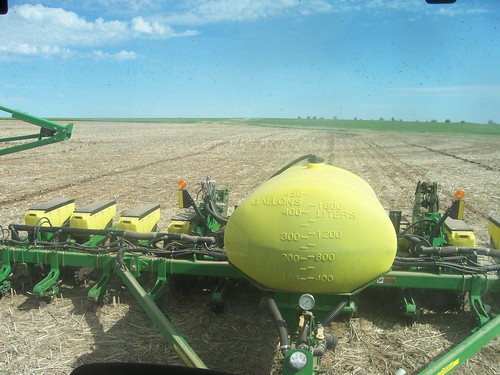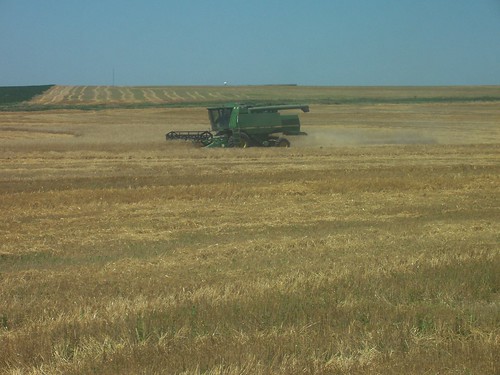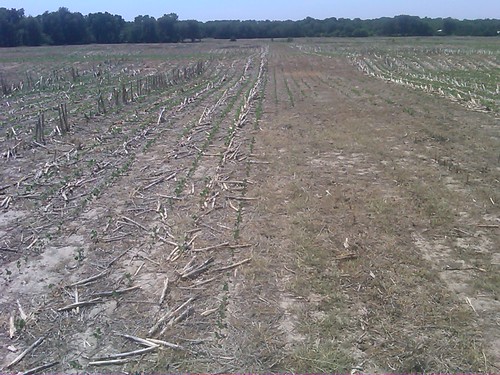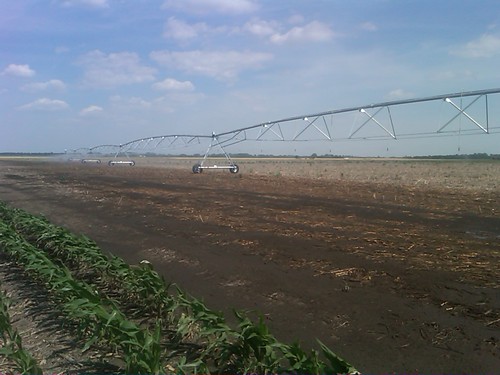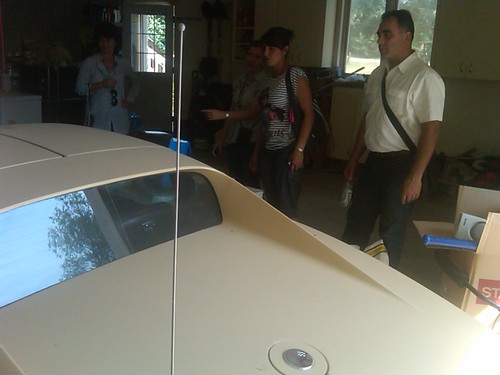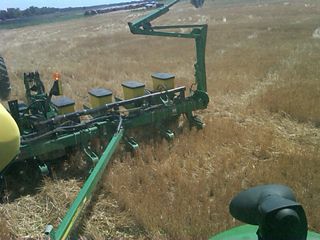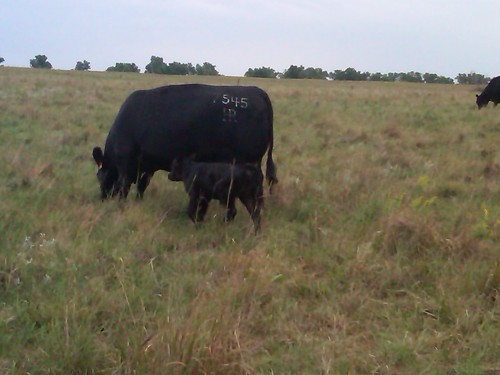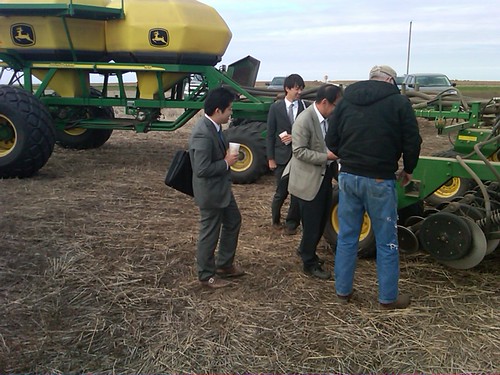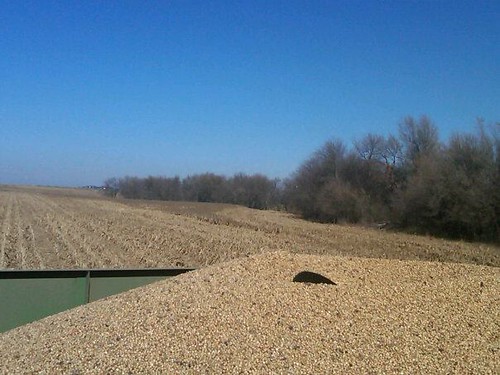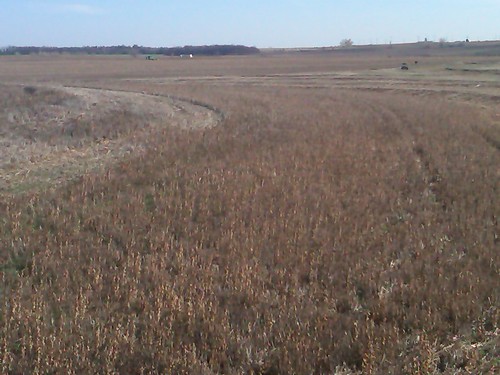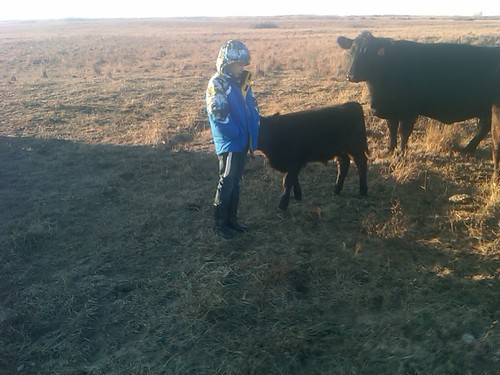We have a small herd of spring calving cows. I was surprised at how many we had the first month, 80%. Then calving slowed to a crawl. I think the heat during the summer before combined with them raising their first calf and were still growing may have had some influence on it. This happens to be the only white faced calf born this year.
I spent a good portion of my spring seeding corn, sunflowers, soybeans and grain sorghum. I didn't have a picture of planting this year so I used this one from my archives.
The bare strip is from having half the planter turned off while planting sorghum the previous year. Soybeans struggled to sprout and grow here until after a good rain. I was surprised while checking planting depth during planting that we actually had some soil moisture in the planting zone where there was even a minimal amount of residue covering the soil.
This how I spent most of wheat harvest and the rest of the summer irrigating corn and soybeans. We had replaced an irrigation system last spring and this is the first irrigation pass with it.
On June 16th we had a group of farmers from Bulgaria visit the farm. It was an interesting visit, once they became comfortable with us the ones that could speak English visited with us. They were interested in how we raise Sunflowers, but farmers will be farmers no matter where they are from the conversation turned to farming practices in general and all the crops we raise. This is the only photo I took was this one of them looking over my dad's older Corvette. The International Grains Program at Kansas State University coordinated the tour.
We acquired a few fall calving cows last spring. They had started calving a couple of weeks earlier than expected. These cows came from Harms Plainview Ranch so they should genetically exceed most commercial cows.
This fall during wheat seeding we had a group of wheat flour millers from Japan visit. They were interested in hard white wheat and how we raise it. My dad is explaining to them how the drill puts seed and fertilizer in the soil in this picture. This was also coordinated with International Grains Program at Kansas State University and
Farmer Direct Foods was also involved. My mom is a heckuva a home baker and made a loaf of bread with both red, the more common breadwheat, and white twisted together which gave them a comparison of the two types of bread.
Milo, also known as grain sorghum, harvest was fair to good, I experimented with more hybrids this year because of an old reliable being unavailable. Planting date and the years how many years the field hand been in a no till cropping system. This happens to be a variety that has yellow grain and is known for high yield potential. I chose this variety because it was optimum planting time and I thought we would have timely August rain. We didn't get the amount of rain in August that I was expecting, but the heavy wheat stubble and quality soil held the water and allowed us to have a good crop on this field. The grain heads weren't anything besides ordinary, but it came into the combine really good.
A field of double crop soybeans during harvest. They ranged anywhere from fair to bad, in some fields the real advantage for having them was establishing some bacteria in the soil that helps the plant extract nitrogen from air.
My oldest son with a curious calf. I picked up my son after school to help me
cube the cows, cubes are a high protein feed used to supplement cattle. While
the cows were crowding around the piles of cubes, the calves were loitering
around the pickup. This guy walked up to my son and started nibbling on his
coat and checking him out. The calf had done this for a few minutes before I
took the picture. This set of cows seem to be very calm and gentle which is
great for having him out with me learning about cattle. Since he is all about
animals and livestock, I want him to learn all he can about working with
them properly.
Our irrigated corn was good despite the hot weather last summer. We did have a hybrid that suffered from sun scald thankfully I didn't have alot of that one. Last year I had tried quite a few new hybrids and only planted the ones that performed the best and didn't experiment with anything new this year. The irrigated soybeans were good to great, a couple of fields had damage from a corn herbicide.


